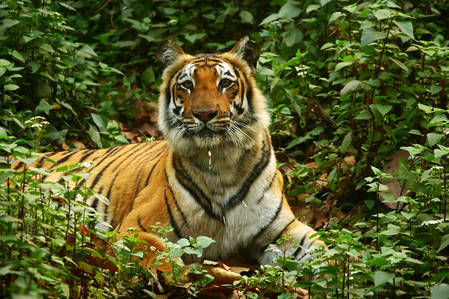Madhya Pradesh to Develop Buffer Zones for Tigers
Madhya Pradesh to Develop Buffer Zones for Tigers
Why in the News ?
The Madhya Pradesh Cabinet has approved a ₹145 crore scheme for developing buffer zones around nine tiger reserves to support the growing tiger population, with plans for fencing, wildlife protection, and skill development for local communities.
Highlights of the Scheme :
- Madhya Pradesh Cabinet has approved a scheme for the development of buffer zones in the state’s nine tiger reserves.
- The scheme has a total outlay of ₹145 crore for the financial years 2025-26 and 2027-28.
- The buffer zones will include ecologically sensitive areas requiring protection.
Key Activities:
- Installation of chain-link fencing in sensitive buffer areas.
- Development of grasslands and water resources for wildlife.
- Implementation of wildlife protection measures, including fire safety protocols.
- Health monitoring and treatment of wild animals in the reserves.
- Skill development training programs for local communities to aid conservation efforts.
Conservation Impact:
- The tiger population in Madhya Pradesh has risen from 526 to 785 in the last four years, highlighting the success of conservation initiatives.
- Madhav National Park, the ninth tiger reserve in the state, saw the introduction of three tigers as part of a reintroduction project in 2023.
- The scheme aims to enhance the sustainability of tiger reserves and mitigate human-wildlife conflicts in buffer zones.
About Core and Buffer Zone in Tiger Reserves:● Core Area: ○ Strictly oriented towards conservation. ○ No forestry operations, collection of minor forest produce, grazing, or human settlement. ○ No biotic disturbances allowed. ● Buffer Zone: ○ Managed as a multiple-use area. ○ Focuses on conservation-oriented land use. ○ Provides habitat supplement for the spillover population of wild animals from the core. ○ Facilitates eco-developmental inputs for stakeholder communities. ○ Aims to reduce human-wildlife conflict and support local socio-economic development. |




